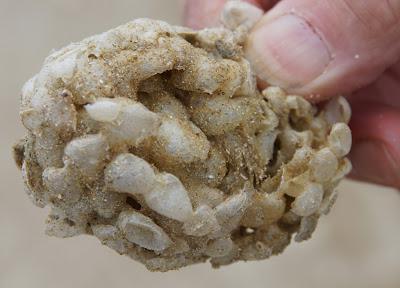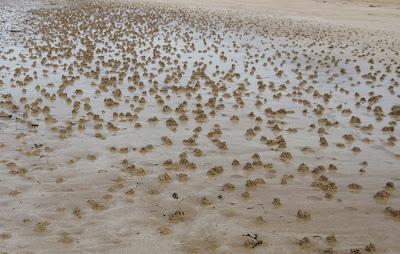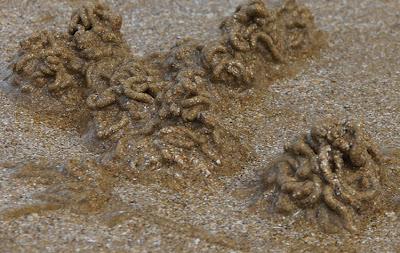
At first glance, someone appeared to have dropped plastic packaging below the high tide line. In fact, the bubbly white substance is a cluster of whelk egg cases. When laid, they would have been attached to a stationary object such as a stone. The whelks have since hatched - and those who emerged ate unhatched sibllings as their first meal. The empty case then became detached and washed onto the shore.

More obviously natural were the lugworm casts scattered across much of the beach. These worms feed not on siblings but on sand, digesting anything edible and excreting the leftovers in these little piles. Dips nearby mark the points where their mouths are taking in sand. They are a popular fishing bait, but I left the worms (which can be up to six inches long) undisturbed in their sandy U-shaped burrows.


